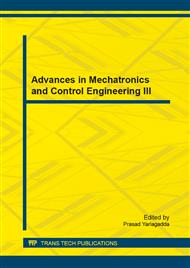p.147
p.151
p.155
p.162
p.166
p.174
p.180
p.185
p.189
Detection of Unattended and Removed Objects in Public Areas
Abstract:
This paper presents a novel approach to detect unattended and removed objects from a single fixed camera video for surveillance applications. In this paper two backgrounds rather than any tracking information are employed to detect static foregrounds. Each of the backgrounds is modeled by three Gaussian mixtures. We make a subtraction between two foregrounds extracted by the background subtraction method to initially determine the static regions. Then the region-level density analysis and texture information are combined to remove false static foreground regions caused by illumination changes and objects that are in the static-moving transitions. Finally, classification of the unattended and removed is determined by a method that compares color histograms of the static foreground zone and its extended areas in current frame. Experimental results show that our method can work well in simple scenario as well as complex environments with an unsmooth background.
Info:
Periodical:
Pages:
166-173
Citation:
Online since:
October 2014
Authors:
Price:
Сopyright:
© 2014 Trans Tech Publications Ltd. All Rights Reserved
Share:
Citation:


